Iceland: How much things cost & how to visit on a low budget
Since its currency crash in 2008, Iceland had gone from absurdly expensive to somewhat reasonable in cost, and that has prompted thousands of new tourists to stream in to see what all the fuss is about. It’s hard to find a visitor to Iceland who didn’t absolutely love the place, but you won’t find anyone who tells you it’s cheap, so planning ahead is essential. Prices have continued to creep up in 2015 and 2016, so it’s again among the most expensive European destinations.
Many visitors arrive on an Iceland stopover going between North America and Europe, but with very cheap flights to and from Europe it’s becoming popular for adventurous types from all over the continent. In 2013 I spent 9 days in the country, always checking for prices and the cheapest ways of doing things, so below I can lay out how to budget and what to do to keep costs down.
Note: This article was first written in late 2013, but all prices have been updated as of December 2016 to be current through 2017.
Reykjavik vs. the rest of Iceland: Where to go
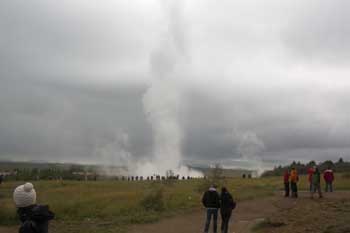
If you have one night or a few nights you are better off taking a bus or renting a car directly from the airport and heading east along the southern coast for some of the country’s best sights. If you have at least a week you’ll want to rent a car and do a lap around Iceland’s famous Ring Road, allowing you to see nearly everything the country has to offer in a neat and organized way.
Iceland accommodation: Hostels, guesthouses, and hotels
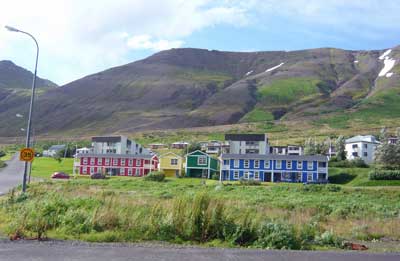
The most common form of accommodation in Iceland is a guesthouse and hostel combination which will have a mix of private rooms and dorm rooms, with shared bathrooms in down the hall. Most of them have fully equipped shared kitchens, so self-catering is at least as popular as eating out while exploring Iceland outside of Reykjavik.
High season (June through August) typical accommodation prices
All prices quoted in US dollars at a rate of about 110 Krona to US$1 in December, 2016.
- Hostel dorm bed: US$34 to US$58
- Single private with shared bathroom: US$85 to US$135
- Double private with shared bathroom: US$118 to US$140
- Double private with en-suite: US$130 to US$320 (and up)
Prices in Reykjavik are a bit higher than elsewhere in the country, but not by much. Prices in the off season are about 30% lower than in high season, but in the slowest months many places close so rates never go much lower than this.
Most Iceland guesthouses are NOT on the normal hotel-booking sites
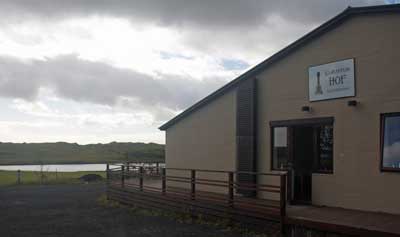
The good news is that when you get to Iceland, the tourism office will give you a directory of almost every guesthouse on the island, and there are other ways of finding these guesthouses and other informal accommodations. Even as of late 2016 you should be able to book a double room (with shared bathroom) for about US$120 per night in most towns in Iceland. If you do a hotel search you might see prices that are double that, but those are in the few formal hotels with 24-hour lobbies and such.
Increasingly, Airbnb and other online rental sites are the best place to find guesthouse accommodation in Iceland. As of only a few years ago, most places would be booked by phone or in person on arrival day, but now more and more places can be pre-booked, at reasonable prices.
Sleeping bag accommodation in Iceland
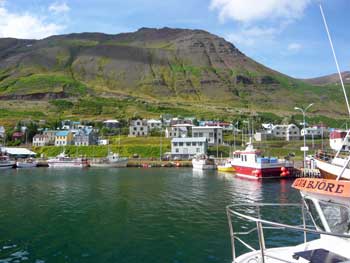
In a ‘sleeping bag accommodation’ (as it’s known in Iceland) you’ll get a bed with a mattress and often a pillow. So with even a cheap indoor sleeping bag, you’ll be comfortable and warm while saving quite a bit of money. For those renting cars, this is a highly recommended strategy.
You can rent sleeping bags in Reykjavik starting at around €12 per week.
Most Iceland attractions are free (the good news)
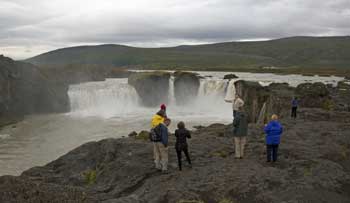
So to see all the glaciers and waterfalls and volcanic beds and other scenic attractions, it’s all free of charge with no admission cost or even parking fees. The larger attractions also have visitor centers where you can get local advice for free as well.
Iceland transportation: Rental cars and buses
Even as a lifetime public transportation fan, I’m very glad I gave in and rented a car to tour Iceland, even as a solo traveler. For the most part the roads are in perfect condition and virtually empty even in high season, so driving couldn’t be easier. Also, the country has stunning vistas every time you turn a corner, so being able to stop in the middle of the road even if there is no room to pullover, is critical.
The buses are modern but also expensive and running on very limited schedules. If you only have enough time to cover the main sights along the southern coast you might buy one of the bus passports that allows you to hop on and hop off, though a rental car is still much better and easier.
Rental cars in Iceland: What you need to know
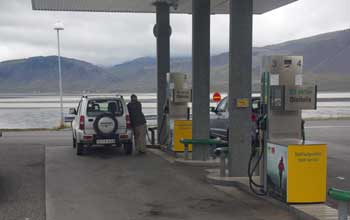
For an extra fee you can pay to reduce that deductible to almost nothing, but the more popular add-on is the Gravel and Glass insurance. For around €10 per day with this coverage you have a zero deductible if the vehicle gets damaged by gravel or if any glass gets broken by flying rocks (or anything else). Unfortunately, many of Iceland’s side roads and even a few of the main roads are covered in gravel, and if you drive at anything above a crawl, there will be some gravel flying around.
Personally, I normally decline add-ons like this but in this case I bought the Gravel coverage after reading a few horror stories in online reviews. I didn’t get any damage that I’m aware of, but the peace of mind was worth a LOT when driving on isolated gravel roads so I wasn’t petrified that I was chewing up the paint job just trying to stay safe on the roads.
Rental cars in Iceland
- 2-wheel drive compact (manual): US$230 per week and up plus add-ons
- 2-wheel drive compact (automatic): US$270 per week and up plus add-ons
- 2-wheel drive mid-size: US$450 per week and up plus add-ons
- 4-wheel drive van or SUV (automatic): US$650 per week and up plus add-ons
Daily rates are about 20% as much as weekly rates, so 5, 6, or 7 days cost the same.
Add-ons
Gravel coverage: US$10/day
GPS (highly recommended): US$10/day
Additional collision waiver: US$10/day
Fuel prices in Iceland
Every gas station in the country has the same prices, which don’t seem to change much. As of December 2016, a liter of petrol is 194 Krona, which is about US$1.75 or €1.63, or about US$7.50 per gallon.
Bus pass prices in Iceland
For a quick day trip from the airport to some local sights you can spend as little as US$90 per person, but for the longer distance buses you’ll spend at least US$130 to US$250 depending on length of time in order to hop on and hop off.
A Ring Road passport will cost around US$400 per person, so for two people it’s no cheaper than renting a car, even after fuel is taken into account, and for 3 or 4 people it’s definitely cheaper renting a car.
Food prices in Iceland
Here’s the thing: sit-down restaurants in Iceland are very expensive by international standards, so there aren’t very many of them. Obviously Reykjavik has many restaurant choices but most smaller towns might have only a few at most. The good news for budget travelers is that fast-food options are more plentiful, and self-catering is even cheaper and easier.
Restaurant prices in Iceland
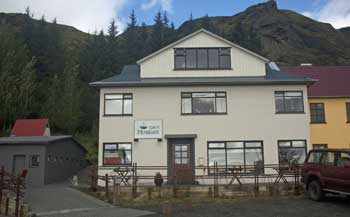
A soft drink, coffee, tea, or even bottled water will generally be between US$3 and US$5 in a restaurant. A pint of beer will typically start at around US$7 at even the cheapest places, while wine and spirits cost even more.
Fast food prices in Iceland
In Reykjavik and larger towns (which might only have 2,000 residents) you’ll have many fast food options including Subway, Quiznos, and usually a few local burger or hot dog places. Prices for a sandwich at Subway are about US$6 for a 6-inch and US$10 for a foot-long, so they aren’t too much higher than elsewhere in Europe, and are sure cheaper than proper restaurants.
More good news for drivers is that many gas stations around the country have fast food restaurants built in, so it’s fast and easy to pick up a sandwich or hot dog by the side of the road.
Hotel breakfast prices in Iceland
Many hotels and guesthouses in Iceland serve breakfast, but it’s almost always at an extra fee, and many don’t serve anything at all. If a breakfast is offered it will typically cost between US$12 and US$15 for a buffet of cereals, bread, cold cuts, cheeses, hard boiled eggs, juices, coffee and tea, and perhaps some pastries.
Making your own self-catering breakfast will be cheaper, but since you can stuff yourself for a flat fee at the breakfast buffets it might be worth it to save yourself the hassle of shopping the day before and making breakfast in the morning.
Self-catering in Iceland
The best budget tip for Iceland is to buy and prepare your own food, and you can literally do it for all three meals per day if you prefer. Since Iceland has almost no national “must-try” dishes, you can buy and prepare your own food without worry about missing anything meaningful.
Nearly every guesthouse in Iceland has a shared kitchen where at least half the guests will be storing and preparing breakfasts and even dinners. They have refrigerators, coffee makers, electric kettles, pots, pans, dishes, and silverware, as well as salt and other spices, so you can buy just the food and you’ll be able to prepare it all.
Supermarket prices in Iceland

For example, you can buy a 400 gram (1 pound) block of Havarti cheese for around US$5, but a similar looking cheese right next to it on the shelf might be US$15 for the same amount. The same is true for lunch meats. Sliced ham can be US$3 for enough to make 2 sandwiches, but sliced roast beef might be US$10 for the same amount.
Some sample prices in the cheaper Iceland supermarkets
- Sliced white bread: US$1.70 per large loaf
- Fresh baguette: US$1.50 to US$2 each
- Hot dog buns: US$2.50 for 5
- Pork hot dogs: US$3.50 for 5 large hot dogs
- Cheap Havarti or other local cheese: US$5 for 400 grams (1 pound)
- Imported cheese: US$10 to 15 for 400 grams (1 pound)
- Sliced ham for sandwiches: US$5 for 400 grams (1 pound)
- Sliced roast beef for sandwiches: US$12 for 400 grams (1 pound)
- Pasta: US$1.50 for .5 kilogram (1.1 pounds)
- Pasta sauce: US$3 for a .5 liter jar
- Ground beef: US$5 for .25 kilos (half pound)
- Bake-at-home pizza: US$5 to US$7 for one person
- Bag of tortilla chips for 2 or 3 people: US$2
- Jar of salsa for those chips: US$3
- Breakfast cereal: US$3 to US$5 per box
The prices above are for many of the cheaper and more common things that budget tourists buy in Iceland. As mentioned above, if you want something exotic and imported, it might cost double or triple what you pay at home, if you can find it at all.
Alcohol prices in Iceland
In restaurants and bars throughout the country you’ll pay at least US$8 for a pint of beer, and at least US$10 for a glass of wine or a simple cocktail. If it’s a fancy place you’ll pay even more, of course.
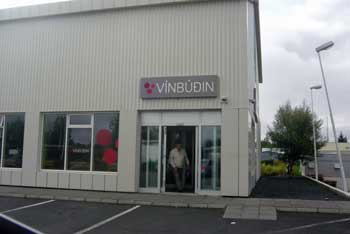
Here are some typical prices for alcohol:
- 330ml can of local beer: US$2 to US$3
- 500ml can of local beer: US$2.50 to US$4
- Cheapest bottle of wine: US$10 to US$12
- .7L bottle of off-brand vodka: US$30
- .7L bottle of mid-level brand vodka: US$50
Bottom line on doing Iceland as cheaply as possible
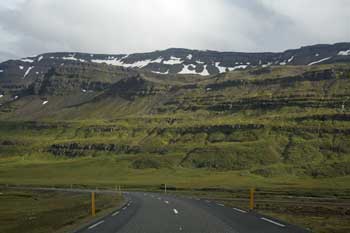
Whether you are going to get dorm beds or private rooms, as long as you will have your own wheels it’s worth renting a sleeping bag. You get the same bed and same services for about US$10 less per night, which will pay for a week’s rental of an indoor sleeping bag.
Unless you are a terrible driver or afraid to drive, it’s highly recommended to rent a car instead of trying to get around using buses. Once you get there you’ll see that having 100% flexibility with a car compared to almost no flexibility with a bus, is worth a LOT.
Instead of trying to be cheap with transportation, be cheap with self catering food and drinks for yourself. If you have at least a small group of people you’ll be able to have a party each evening in or near the shared kitchen of your guesthouse, and it will be more lively than any restaurant in town.

Excellent information. Which is the best direction to drive the ring road? I would prefer the sights to improve as as I go along.If I were to choose 3 stops along the way (Reykjavic, Hofn, Akureyri) spending 4 days at each destination, would this be too much driving on the moving dayd?
Stewart,
As always, I’m happy to hear that this information has been helpful. As for which direction to do the Ring Road in, I went counter-clockwise and was very happy with it, but it’s hard to say if the sights are better in one direction or the other.
Here are a couple of notes that might help: The highway between Reykjavik and Vik (along the southern coast) is by far the most crowded stretch of highway in the country. And personally, I thought the 3 main attractions of the “Golden Circle” near Reykjavik were a bit disappointing in addition to being crowded, but the sights closer to Vik were some of the best in the country. So if you go the way I did, it would mean spending your last two days or so in the most crowded area, and your last day driving behind tour buses full of people on a 8-hour stopover just seeing a few nearby things. On the other hand, nothing in Iceland is really crowded in the normal sense of the word, it’s more that you’d see 10 cars per minute driving near the capital, and maybe 1 car per minute (or less) driving in the northern part of the island.
And if you are considering driving from Reykjavik to Akureyri in one shot and then spending 4 days there, then driving to Hofn in one go and spending 4 days there before driving all the way back to Reykjavik, I don’t think it would be a wise use of time and distance on the Ring Road. For one thing, I’d guess those driving days would be at least 10 hours each, and that’s if you don’t stop along the way, which is kind of the whole point.
My own plan was to divide the island up into 7 driving days for my one-week car rental, and I’m very glad I did it that way. There are waterfalls and hot springs and volcano fields and gorgeous bits of scenery in every part of the island, so I tried to cover 3 to 5 hours of actual driving each day, with plenty of time to stop at the sights along the way. In most of the island, there are so few other cars that I often literally stopped my car in the middle of the road for a minute or two while I took some photos out the window. In some places I could have stopped for 20 minutes and not seen another car, which was honestly one of the most wonderful experiences of the whole thing. And I’m talking about the main highway, not some side road. A few of the better sights (waterfalls, national parks) are maybe 30 minutes driving off the Ring Road, so you have to factor in a bit of extra time on those days.
If you prefer to base yourself in one place for longer than just one night, those cities are your list are probably the best choices, but still I’d try to ration out the driving more so you don’t have to race on your longer days. There are little towns with a few guesthouses every hour or so as you drive around, so you don’t have to go too far on any given day. I hope this helps, and feel free to follow up if I might help more. As you can tell, Iceland has been one of my favorite destinations ever so I’m excited just chatting about it like this. -Roger
Hi Roger, some really helpful information. Thanks, am benefitting from it. We are going to be in Iceland from 4 – 11 August. The only thing I have booked is the flights. At present, thanks to your help, we are going to hire a car and take sleeping bags. Do we need to book accommodation in advance, bearing in mind we don’t know where we will get to each day? Should we also book a car in advance?
Thanks again for all your sound advice, Linda
Linda,
Always happy to hear this stuff helps. As you may have read (although I’m not sure how specific I was in the article), my trip was the last week in August, which is the tail end of the tourist season. Going early in August, there will be more tourists there, but still I think most of it will be quite easy.
Accommodation in Iceland can feel quite mysterious until you get there, so I was a bit stressed out by it as well. You can find hotels and some guesthouses online, although they tend to be the most expensive options in each town. So you can kind of use those as a back-up plan if all else fails. Otherwise, you’ll want to get your free copy of the sort of catalog that lists most of the smaller guesthouses and inns in each town. I picked up a copy at the tourist information office in the heart of Reykjavik, but I think you can get it other places as well.
Once you have that thing, you’ll have many choices for sleeping in each town, and you can narrow your decision as you figure out where you want to end up that night. That will include many of the sleeping bag accommodation places. There’s also Airbnb. If you buy a Iceland SIM card when you arrive, you’ll have phone and data service pretty much everywhere around the Ring Road. So once you pick a target for the night, you can make a few calls or send a few emails to lock in a place. When I was there, I don’t think I came across a place that was sold out for the night, but earlier in the month it probably happens.
In other words, it’s actually pretty easy to find accommodation each day as you go, and you’ll also probably be amazed at just how empty Iceland is once you get away from the capital.
As for the rental cars, I doubt they could be sold out, but I think you can probably get a better rate if you book earlier. I used Sixt and was quite happy with everything. Have a great trip, and let me know if you have more questions. -Roger
That’s really interesting. If we set out from the airport in a south eastern direction is it possible to pick up a sleeping bag and catalog of guest houses at the first town we come to? It sounds a good idea to avoid the capital and am thinking of stopping there once we have gone the other way around the ring road. What are your thoughts about that? Thanks once again, Linda.
Linda,
When I researched renting a sleeping bag, the place I ended up using was in central Reykjavik, although I do believe there were others that are elsewhere in the area. If you can find one of those other places, then I think your plan sounds good. As I probably mentioned above, Reykjavik isn’t nearly as interesting as the scenery is beautiful, but it’s probably worth spending a day there if you are in Iceland for a week or more.
I also think you might be able to get that guesthouse catalog at the airport or from your car rental company. My rental company (Sixt) gave me something similar to that, even though I already had the one from the tourism board. That thing might also be available online. I’m sure you could find a copy somewhere without much difficulty. Good luck. -Roger
We are thinking of coming to see the Northern Lights in Feb next year, is that a good time of year?
Ritchie,
I’m no expert on the Northern Lights, except that I know people go to Iceland during the colder months to see them. I think January and February are two of the better months so you should be good. -Roger
Hi Roger,
heading to Reykjavic for Champions League qualifier and want to know how long the bars are open, if they have happy hours and what is the price of a pint.
Thanks
Danny,
I didn’t stay out late, but it appears that bars in Reykjavik typically stay open until 01:00 on Sundays through Wednesday nights, and until 03:00 on Friday through Saturday nights. It’s a very party-oriented city center so I’d imagine that they’ll stay open even later if an event is still going on.
The pint prices were starting at around 900 krona (US$8) at just about every place I looked at, and the real trendy places might charge even more. One place I really liked was a sports bar on the main shopping street (you’ll find it if you look), which had pints at 1000 krona (US$9) but they were 2-for-1 on happy hour, which was 18:00 to 20:00 or maybe an hour later. There were other happy hours in that early evening, but they were just a discount of 100 or 200 krona instead of the 2-for-1 at the sports bar. Those prices are all pretty high for the Icelandic people as well, so it’s common to buy retail and get started at home (or in a hotel). You have to plan early for that because they only sell alcohol at the state-run stores, which have pretty short hours. Good luck with it. -Roger
Hi Roger,
I’m going to iceland on nov with my sister and cousin. How’s the weather in November? Would you recommend going on a tour to do the golden circle and northern lights? We are renting a car but I’m not sure what to do or what the golden circle comprises.
Thank you,
Jocelyn
Jocelyn,
Iceland in November is typically a bit over freezing during the day, and a bit under freezing at night, but people seem to agree that it doesn’t feel all that harsh and big storms are rare. The days are also quite short that time of year, as Iceland is just below the Arctic Circle.
As mentioned in the article, I rented a car and drove around the Ring Road in 7 days. During my final day I visited the 3 main components of the “Golden Circle Tour”, which are the original Geyser, a large waterfall, and a national park where you can kind of see the Continental Divide. I was surprised at how underwhelmed I was at those things, although the geyser field is quite interesting. The waterfall wouldn’t be in the Top 10 waterfalls I saw while on the Ring Road, and the national park didn’t really feel special at all, at least compared to the unbelievable scenery everywhere else.
So my impression of the Golden Circle tour is that those are the best sights that you can reach on a short trip from the airport and back again on the same day. In other words, it’s not that they are so great, it’s just that they are conveniently close enough to the airport. The Blue Lagoon (very close to the airport) is also very interesting, even if you don’t pay to go in and swim.
With your own rental car, you can do better sightseeing than the Golden Circle, and those attractions are also by far the most crowded so it will be nice to get away from the masses. If the Geyser interests you, it’s worth a visit and it’s free. Otherwise, I think you could see more interesting things on your way to Vik and back on your own. There are lava fields and stunning waterfalls all over the place, and it’s all free to visit if you have your own vehicle. It depends on how long you’ll have the car for, but I’d recommend researching other sights along the southern coast going east from the airport area. Let me know if you have other questions. -Roger
Am so thankful to come across this site! We are going at the end of March for a few days with a package tour. Added a day and are renting a car for 2-3 days. Since our hotel in Rek is already paid for, I am trying to figure out if a trip to Vik & back in one day is feasible.
If not, may leave hotel room empty for one night and stay somewhere near Vik so we can take more time driving back and forth. My son is a photographer and if this trip is like others, we will be stopping A LOT.
Based on your experience, would you advise to stay over near Vik and drive back to Rek the next day?
Thanks!
Jane,
I’m always happy to hear that this information is helpful to some. I’m assuming that by “Rek” you are referring to Reykjavik. Those cities are only 180 km (110 miles) apart and the road between them is in good shape, but it’s also the busiest section of the Ring Road, so if you get unlucky there could be a few slow-downs. But still, it should take less than 3 hours in each direction if you didn’t stop many times.
So yes, you could go to Vik and back in one day, especially if you get an early start. But you’ll be tempted to pull off to the side of the road every 10 or 15 kilometers to take photos, so that could slow you down. It’s also worth noting that the scenery gets less dramatic the closer you get to Reykjavik, so you’d probably be stopping far more often in the area closer to Vik. Hopefully this helps you make a decision. I think you’d really enjoy that part of your trip, whether you stayed in Vik or just did a long day trip. -Roger
Hi,
Thank you for all info!
I want to asked. I know that icelandish people have special internet page. They can write that one persone go to from Reikjavyk (exampe) and can take more people. Maybe you know this page name?
Eli,
I’m glad this article was helpful, but unfortunately I don’t know anything about the website you are looking for. Here’s one that does seem to facilitate car pooling: http://www.samferda.net. Good luck. -Roger
Roger, thanks for the helpful advice! I’m traveling to Iceland with a friend in late August for a week. What kind of weather should we expect? Which items of clothing are essential? It sounds like we should pack light.
Farah,
As I may have written, I also went in late August, and it was quite mild/chilly every day. The average high around then is about 52F/11C, with average lows of about 44F/7C, and that’s about how it felt for me. The climate seemed about the same all the way around the island, though that’s not always the case. The point is, you’ll want a jacket even during the day, and you might also bring a sweater for another layer. If you rent a car, packing light isn’t much of an issue, but if you are camping and hiking a lot it could be. Bon voyage. -Roger
My husband and I are taking a 2-day stop in Iceland in June in route to Copenhagen. We were thinking of taking a bus tour of the Golden Circle. In your opinion would we be better off to rent a car for this, or was your case for a car being built around the Ring Road drive? We are weighing the advantages of being able to stop as much as we like against the value of what we would hear from the tour leader on the bus tour. Your article has been helpful to us. Thank You.
Donna,
My car-rental recommendation was really more for the whole Ring Road. But still, for a couple with 2 days, I would also recommend a rental car as long as it doesn’t feel too expensive. I actually did the 3 main things included on the “Golden Circle” on my final day with my rental car, and they honestly weren’t nearly as impressive as most of the things I’d seen elsewhere in Iceland. I believe the primary appeal of the Golden Circle is that it can be done in about 8 hours from the airport and back. So it’s an excellent introduction to Iceland on a half-day layover, but a bit disappointing compared to a proper visit of 2 days where you can drive to the things that sound the most interesting.
In my opinion, the Þingvellir national park isn’t really much to see, and the Gullfoss waterfalls are maybe the 10th most impressive of the 20 or so falls that I saw on the Ring Road. Even the valley of Haukadalur, which contains the geysers Geysir and Strokkur, isn’t nearly as scenic as many of the volcanic areas elsewhere along the southern coast.
If you rented a car, you’d be able to drive all the way to the town of Vik (along the southern coast) in a few hours, and then you could spend your two days stopping at all the various falls and national parks and volcanic fields and such along the way back to the airport. It’s very easy and low stress because there is basically one well-maintained road, and very little traffic on it. By the way, with only 2 days, I’d skip Reykjavik altogether unless there is something specific you want to see. It’s pleasant enough, but not nearly as interesting as you might think for such a remote capital.
Best of luck, and feel free to ask any other questions if you have them. I enjoyed Iceland so much that I love answering questions about it and also thinking about my own next visit there. -Roger
Hi there, im just wondering approximately how much it would be for a round trip ticket to Iceland for seven days coach. By the way, this was really informative and Im so glad i found this information.
Mackenzie,
I’m happy to hear that the article was helpful, and I highly recommend an Iceland visit if you can do it. In order to help you figure out the airfare, I’d have to at least know where you are starting from, and the departure date could make a difference as well. -Roger